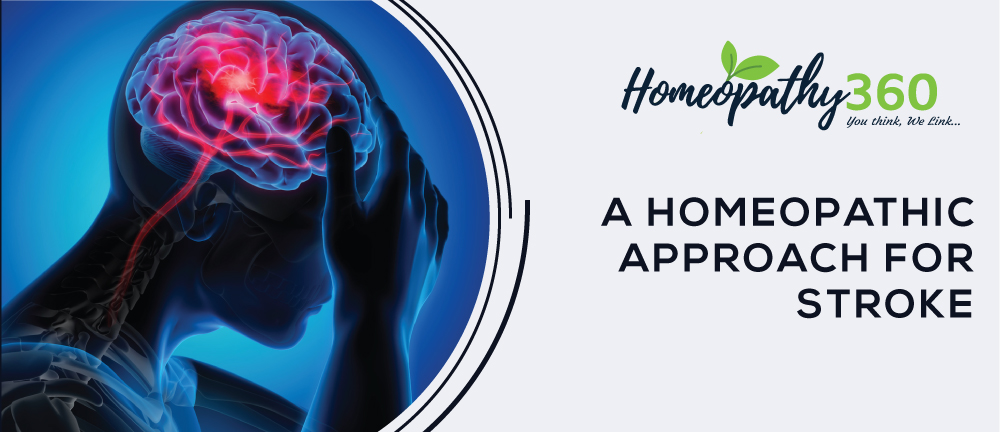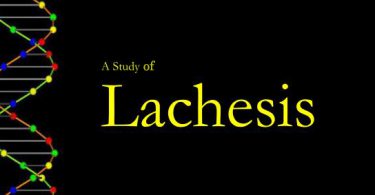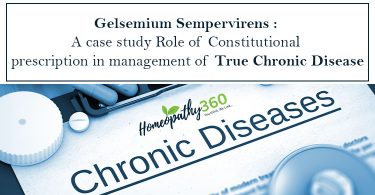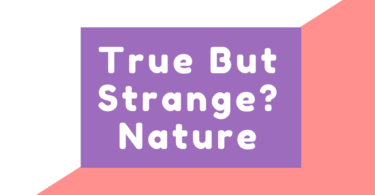
Abstract: Stroke is an abrupt onset of focal neurological deficit due to vascular events lasting for 24 hours. It is second leading cause of death around the globe. Incidence of stroke is greater in males than in females. Risk factors such as obesity, smoking, past history of vascular events, for example, high blood pressure, etc. Stroke is broadly classified into two categories: ischaemic and haemorrhagic. Its initial symptoms include: altered sensations, vision impairment, ataxia, aphasia and dysphasia. Main investigations to be done are CT Scan, MRI and cerebral angiography. Homoeopathic management for stroke includes Arnica montana, Baryta carbonicum, Belladonna, Lachesis mutus and Nux vomica.
Keywords: Stroke. Neurological deficit. Homeopathy. Arnica montana.
Abbreviations: WHO – World Health Organization, SLE – systemic lupus erythematous, CT – computed tomography, MRI – magnetic resonance imaging, CBC – complete blood count.
Introduction
Stroke is a term used to describe the sudden cut off of the blood supply to the brain leading to death of the brain tissue and its consequences.[1] According to WHO, stroke is defined as “a focal (or at times global) neurological impairment of sudden onset, and lasting more than 24 hours (or leading to death) and of presumed vascular origin.”[2] Around the globe, stroke is the second leading cause of death and third leading cause of disability.[3] The incidence of stroke is about 1.25 times greater for males than females. Following is the aetiology of stroke:
- Cardiac embolism
- Intracranial haemorrhage
- Subarachnoid haemorrhage
- Arterial aneurysms
- Premature atherosclerosis
- Arterial dissection
- Thrombophilia
- Homocystinuria
- Antiphospholipid antibody syndrome
- SLE
- Vasculitis
Risk factors for the development of stroke are divided into two according to their modifiability which are given in table 1.[4]
Classification: Given in table 2.[4,5]
Signs and symptoms of stroke depends upon the location or part of the brain involved. Initial signs and symptoms of stroke include:
- Altered sensation: there can be increased sensitivity to pain (hyperalgesia) characterize
- Weakness of muscles in the contralateral side of the lesion along with alteration of muscle tone (initially flaccid followed by spasticity).
- Abnormal reflexes in which initially there is hyporeflexia with flaccidity followed byed by constant severe burning with intermittent sharp pains.
- Vision impairment: this includes homonymous hemianopia when the lesion involves optic radiation or primary visual cortex. The person may also feel problem with depth perception and spatial relationships. hyper-reflexia.
- Altered coordination and motor programming results in sensory ataxia and apraxia respectively and other symptoms related to the area affected.
- Impaired postural control and balance can be seen in the form of pusher syndrome.
- If the lesion is occurs in dominant hemisphere, it may result in aphasia, dysarthria and dysphagia.
After completion of the acute phase, development of symptoms depend upon the lesion remaining in the brain.
Investigations and management: Specific examinations include CT Scan, MRI and cerebral angiography. Other tests include lumbar puncture, CBC, urine analysis, blood sugar level, lipid profile and cardiac evaluation. Patients are managed according to their symptoms. Rapid assessment of suspected stroke is done by Rosier scale. It is aimed to minimize the area of damage in brain along with prevention of complications.[4]
Homeopathic view and management: Depending upon its etio-pathogenesis and the location of development of lesion, hemorrhagic stroke can be classified under acute and syphilitic miasm while ischaemic stroke can be classified under syco-syphilitic miasm.[6] Following are the main constitutions which are predisposed to stroke (constitutions at risk of developing stroke):
Rubric: Brain, stroke, threatening, predisposition for- acon., ARN., ars., aster., bar-c., bell., calc-f., COFF., fl-ac., gels., glon., hyos., ign., kali-n., lach., laur., nux-v., OP., phos., prim-v., stront-c.[7]
By the study of above drugs and according to homeopathic theory of temperaments, it can be concluded that people having sanguine temperament are more prone to develop stroke.
Homeopathic management mainly focus on the later symptoms of stroke. Though homeopathic medicines can be given during acute stage along with the management protocol of modern medicine according to the symptoms develop which might help in reducing its complications and help in rapid healing of the lesion. Following is list of homeopathic medicines which are useful in such cases:
- Aconitum napellus: Aconite is considered in the initial stage, for acute inflammation and congestion, when the haemorrhage has just happened. Remote effects of fright, great fear and anxiety of mind and body. Extreme restlessness, face becomes red. Congestive headaches. Hot heavy and bursting sensation in the head. The pulse is fast, full, hard, tense and bounding. Palpitation with anxiety. Hot hands and cold feet. Numbness and tingling in hands and feet, especially left arm. Dry, burning mouth with numbness and tingling. Vertigo, worse on rising.[8]
- Arnica montana: Acts upon blood vessels, nerves, induces stasis. It can be given for thrombosis. Apoplexy; loss of consciousness, involuntary evacuation from bowels.[9] It controls haemorrhage and aids absorption in acute attack. Left sided paralysis, pulse full, strong, sighing. Sunken , red face.[8] Ill effects of fright, anger, exertion. Sore lame bruised feeling all over the body, as if beaten. Heat of upper part of body ; coldness of lower. Acts best in plethoric, feebly in debilitated with impoverished blood, cardiac dropsy with dyspnea.[9]
- Baryta carbonicum: Vascular softening and dilatation, aneurysm, ruptures, apoplexy. Remedy for early senility and when degenerative changes begin in heart, brain and vascular system. Vertigo of old people with nausea< stooping. Palpitation felt in head.[8]
- Belladonna: Acts on blood vessels and capillaries become active causing congestion, throbbing and dilatation of arteries. Ill effects of sun, getting head wet. Congestion of blood to head with external and internal heat; distended and pulsating arteries, burning red face. Throbbing of carotids; fits of vertigo with tottering, giddiness, anguish and falling insensibly on left side with flickering before eyes and trembling of hands, anxiety; chiefly in morning or on stooping.[8]
- Bothrops lanceonatus: For broken down constitution, haemorrhagic constitution with great lassitude. Useful in thrombosis and thrombotic affections as hemiplegia. Diagonal course of symptoms. Paralysis of one arm and one leg.[10]
- Coffea cruda: Suited to sanguine and choleric temperament.[12] Pain in head as if bruised; congestion in head especially when speaking. Anxiety of heart and of conscience with heaviness. Trembling of hand, twitching in limbs. Sudden rise of blood pressure.[8] Stimulates functional activity of all organs; increases nervous and vascular activity.[10] Ailments from sudden emotions.[12]
- Gelsemium sempervirens: For complaints which are largely congestive. Cerebral hyperemia, rush of blood to brain and spinal cord which causes convulsions of extremities, cramping of fingers and muscles of back. During congestion face is purple, dilated eyes weakness and trembling.[10] Paralysis of muscles with deep seated pain in back. Lack of muscular coordination, muscles refuse to obey will.[9] Loss of ability to speak after stroke.
- Glonoinum: Indicated for people of nervous temperament. Bad effects of mental excitement, fear, mechanical injuries and their later consequences. Cerebral congestion or alternate congestion of head and heart. Head troubles from working under gas light or walking in the sun. Throbbing, pulsating headache holds head with both hands could not lie down. Violent palpitation; heart action laboured, oppressed; blood seems to rush to heart and rapidly to head.[9]
- Hydracyanic acid: Produces convulsions, cramps, paralysis everywhere. Effects are sudden, spasms, collapse, apoplexy. Cephalgia with vertigo. Intense cerebral congestion; brain feel as if on fire, as if cloud were going over his brain. Blood vessels of heart distended, weak, irregular pulse. Paralysis of inferior extremities, loss of sensation with trembling and staggering.[8]
- Lachesis mutus: Decomposes blood hence has a hemorrhagic tendency.[10] Awkward gait with left side paralysis after apoplexy. Giddiness with congestion. Sensation of constriction. Apopletic fits with blue face, convulsive movement of limbs and extravasation of blood in brain. Violent pain in head with flushed cheeks. Cannot bear anything tight anywhere.[12]
- Laurocerasus: Symptoms accompanied by sudden debility and lack of reaction especially in heart. Stroke occurring suddenly without warning, with palpitation, sunken face cold moist skin and convulsions of the facial muscles. Sudden cough, suffocation and loss of speech.[8]
- Nux vomica: It is suitable to persons who have indulged in sedantary life and liquors, heavy meal. It is best adapted to persons of bilious, sanguine, or nervous and irritable temperament. Paralysis from apoplexy; vertigo and nausea with sticking pains. Threatened brain haemorrhage with giddiness, headache, drowsiness with red face.[10]
- Opium: Indicated in apoplexy of drunkards. It produces fullness of cerebral blood vessels in predisposed persons and readily cause their rupture and consequent symptoms of extravasation of blood into cerebral substance.[13] Head hot with hot sweat; bursting feeling, pupils dilated, red; stertorous breathing. Absolute unconsciousness, complete muscular relaxation, contracted and bloated. Very red, pulse full and slow. Vertigo with convulsive movement of limbs.[8]
- Sulfonal: is prescribed for post stroke symptoms, especially for ataxic movements, staggering gait. Legs weak, cold, trembling, seems too heavy. Stiffness and paralysis of both legs. Alternation of mood, changes like happy, hopeful states with depression and weakness.[10]
Conclusion:
Stroke is a focal neurological impairment of sudden onset due to vascular disease. It is of two main types, viz., ischaemic and haemorrhagic. Its speed varies from sub-acute to acute in onset. Homeopathically, it can be classified under acute syphilitic and syco-syphilitic miasmatic diseases as per its origin. As a limitation of homeopathy; due to its speed of development, lack of awareness and non-integration of homeopathic with the modern medicine; in its acute onset, it should be managed with the aid and equipments of modern medicine. As its scope, we can administer homeopathic medicines along with the acute aid to ensure rapid healing and prevention of its complications. As per the literature of homeopathic materia medica, if given in very beginning of acute stage, these medicines may even prevent its development or limit the lesion into a smaller area. As a scope, under chronic management of stroke, there are many homeopathic medicines like Arnica montana, Bothrops lanceonatus, Glonoine, Lachesis mutus, Laurocerasus, etc. which are effective as well as curative in such cases. Further research and clinical trials are need to be done in this area and on the above discussed points.
References:
1. STROKE | meaning in the Cambridge English Dictionary [Internet]. Dictionary.cambridge.org. 2020 [cited 9 April 2020]. Available from: https://dictionary.cambridge.org/dictionary/english/stroke
2. [Internet]. Who.int. 2020 [cited 9 April 2020]. Available from: https://www.who.int/ncd_surveillance/en/steps_stroke_manual_v1.2.pdf
3. Johnson W, Onuma O, Owolabi M, Sachdev S. Stroke: a global response is needed [Internet]. Who.int. 2020 [cited 9 April 2020]. Available from: https://www.who.int/bulletin/volumes/94/9/16-181636.pdf
4. Harrison T, Isselbacher K, Wilson J. Harrison’s principles of internal medicine. 17th ed. New York: McGraw-Hill; 2015.
5. Walker B, Colledge N, Penman I, Ralston S. Davidson’s principles and practice of medicine. 22nd ed. London: Elsevier Saunders; 2014.
6. Sankaran R. The soul of remedies. 1st ed. Bombay: Homoeopathic Medical Publishers; 1997.
7. Murphy R. Homeopathic Medical Repertory. 1st ed. New Delhi: Indian Books and Periodical Syndicate; 1994.
8. Phatak S.R. Materia Medica of Homoeopathic Medicines. 2nd ed. New Delhi: B.Jain Publishers (P) Ltd.; 1995.
9. Allen H.C. Keynotes and Characteristics with Comparisons of Some of the Leading Remedies of the Materia Medica with Bowel Nosodes. 8th ed.New Delhi: B. Jain Publishers (P) LTD.; 2014.
10. Boericke W. Boericke’s New Manual of Homeopathic Materia Medica with Repertory. New Delhi: B. Jain Publishers (P) LTD.; 2013
11. Kent J.T. Lectures on Homoeopathic Materia Medica. New Delhi: B.Jain Publishers (P) Ltd.; 2011.
12.Clarke J.H. A Dictionary of Practical Materia Medica. New Delhi: B. Jain Publishers (P) LTD.; 2015
13. Farrington E.A. Clinical Materia Medica. Uttar Pradesh; B. Jain Publishers (P) LTD; 2002.

Table 1.
| Modifiable | Non-modifiable |
| SmokingObesitySedentary lifestyleExcessive alcohol intakeOral contraceptivesInfection (meningeal)HyperlipidaemiaDiabetes mellitus | Age and gender:HereditaryPast history of vascular events viz: myocardial infarction, stroke and peripheral vascular disease.High fibrinogen levels |
About the authors
Dr Tushar Acharya1, Dr Priyanka Verma2 , Dr Shruti Vashisht2
1Associate professor, Department of Materia medica, Dr. MPK Homoeopathic Medical College, Hospital & Research Centre (under Homoeopathy University), Jaipur, Rajasthan, India
2PG Scholar (Part-I), Dr. MPK Homoeopathic Medical College, Hospital & Research Centre (under Homoeopathy University), Jaipur, Rajasthan, India





